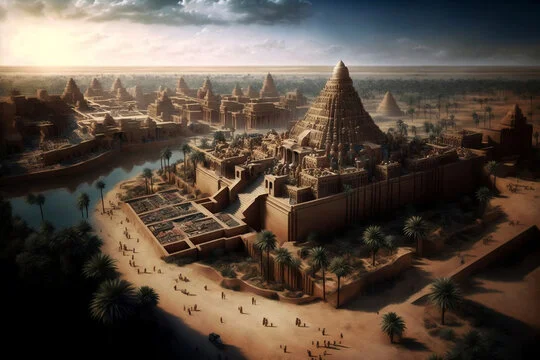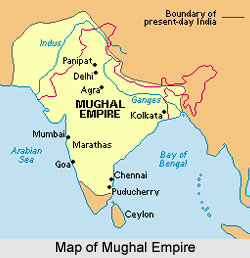The Kashmir War of 1947–48, also known as the First Indo-Pakistani War, marked the beginning of a long and complicated conflict between India and Pakistan over the state of Jammu and Kashmir. The war, which took place shortly after the partition of British India, had far-reaching consequences for the region and fueled decades of tension between the two newly independent states.
Partition and strategic importance of Kashmir
In August 1947, British India was divided into two independent states: India and Pakistan. Semi-autonomous states under British rule were given the option of joining India or Pakistan or remaining independent. Jammu and Kashmir, a large princely state ruled by Maharaja Hari Singh, was geographically situated between the two nations and had a mixed population of Muslims, Hindus, Sikhs and Buddhists. Although the majority of the population was Muslim, the Maharaja himself was a Hindu.
Initially, Hari Singh wanted to remain independent and delayed deciding whether to join India or Pakistan. However, the state’s strategic importance and demographic complexity make it a focal point for both countries. Pakistan, in particular, views Kashmir as a natural extension of its territory due to its Muslim majority population.
Tribal Invaders and the Maharaja’s Dilemma
In October 1947, the situation escalated when Pashtun tribal militias from Pakistan’s North-West Frontier Province, supported by the Pakistani government, invaded Kashmir. These tribal forces, known as “Laskars”, marched rapidly, pillaging and committing atrocities along the way. Their aim was to seize control of Kashmir and pressure the Maharaja to join Pakistan.

Fearing for the survival of his kingdom, Maharaja Hari Singh sought military assistance from India. However, India intervened before forcing the Maharaja to formally accede to India. Faced with the immediate threat of invasion, Hari Singh signed the Treaty of Accession on October 26, 1947, making Kashmir a part of India. This decision allowed India to send troops into Kashmir to repel the invaders.
outbreak of war
With the signing of the Accession Act, Indian troops were flown into Kashmir to protect the capital, Srinagar. The first major battle took place in late October 1947 on the outskirts of Srinagar, where Indian forces successfully repulsed tribal raiders and secured the city. The war escalated rapidly as both Indian and Pakistani regular forces became involved.
The conflict saw fierce fighting in various parts of Jammu and Kashmir, including the Kashmir Valley, Jammu region and the northern part of Gilgit-Baltistan. The terrain, characterized by rugged mountains and harsh weather conditions, made the battle particularly challenging for both sides.
The war was marked by several important engagements, including the defense of Uri and the capture of Baramulla by Indian forces. In the Jammu region, Indian troops launched a counter-offensive to regain territory lost to the invading forces. Meanwhile, Pakistan, which initially denied involvement, soon deployed its regular army to support tribal militias, leading to a full-scale conflict.
UN intervention
As the war continued, the international community became increasingly concerned about the conflict. Both India and Pakistan wanted to present their case to the newly formed United Nations (UN), leading to UN intervention in the conflict.
In January 1948, India formally referred the Kashmir issue to the United Nations, accusing Pakistan of aggression. The UN Security Council passed a series of resolutions calling for a ceasefire and the withdrawal of all foreign troops from the region. One of the key elements of this resolution was the call for a referendum to allow the people of Jammu and Kashmir to decide whether they wanted to join India or Pakistan.
However, disagreements over the terms of the referendum, including the demilitarization of the region, led to an impasse. Despite UN involvement, both India and Pakistan engaged in military operations, with neither side achieving a decisive victory.
Armistice and its aftermath
On 1 January 1949, under pressure from the United Nations, both India and Pakistan agreed to a ceasefire. During this period, the war led to significant regional changes. India retains control of the Kashmir Valley, Jammu and Ladakh, while Pakistan occupies West Kashmir and parts of the northern region, known as “Azad Jammu and Kashmir” and “Gilgit-Baltistan”.
The ceasefire line, known as the Line of Control (LoC), became the de facto border between Indian-administered and Pakistan-administered Kashmir. While the ceasefire ended active hostilities, it did not resolve the fundamental issue of Kashmir’s status, leaving both countries in unresolved tension.
Long term consequences
The Kashmir War of 1947-48 had a deep and lasting impact on the region:
- Partition of Kashmir: As a result of the war, Kashmir was divided into areas controlled by India and Pakistan, a situation that persists today. This division has fueled decades of conflict and led to multiple wars and clashes between the two countries.
- Referendum Issue: Despite calls by the United Nations for a referendum to determine the future of Kashmir, it was never held. Both India and Pakistan continue to assert claims over the entire region, with Pakistan advocating for a referendum and India maintaining that the Act of Unification made Kashmir an integral part of India.
- Militarization of the region: The war set the stage for heavy militarization of Kashmir, with both India and Pakistan maintaining a strong military presence along the Line of Control. Ongoing military buildups and periodic conflicts have contributed to instability in the region.
- Impact on Indo-Pakistani relations: The Kashmir issue has been a focal point of conflict in Indo-Pakistani relations since the 1947-48 war. It has led to multiple wars (1965, 1971, and 1999) and continues to be a flashpoint for violence and diplomatic tensions between the two nuclear-armed neighbors.
The Kashmir War of 1947–48 was the first major conflict between India and Pakistan, and marked the beginning of decades of animosity and hostility between the two countries. Although the war ended with a ceasefire, the underlying dispute over Kashmir’s status remains unresolved, fueling tensions and instability in South Asia. Today, the Kashmir conflict is one of the longest-running regional disputes in modern history, with profound political, cultural and emotional implications for both India and Pakistan.
Read Also: Fact Behind the Resurrection of Jesus Christ
![]()






One thought on “Kashmir War of 1947- 48”